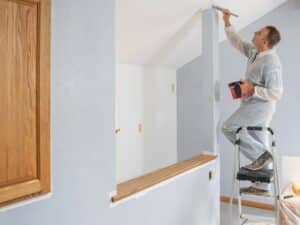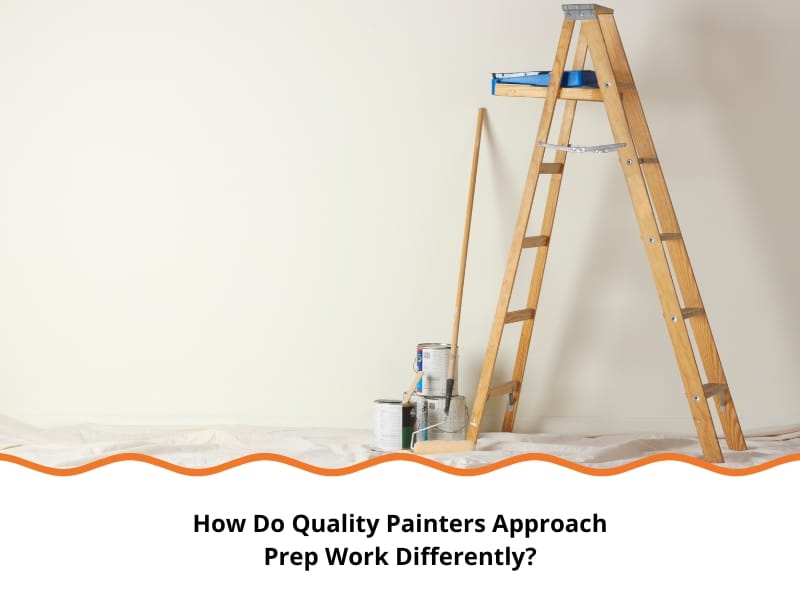Prep work is the quiet achiever of every professional paint job. It often goes unnoticed, yet it’s the foundation of a durable, even, and long-lasting finish. While inexperienced painters may rush this stage to get colour on the walls faster, quality painters understand that skipping or skimping on preparation leads to costly failures down the track.
Sydney’s climate and property diversity—from high-humidity beachside homes to century-old inner-city terraces—add extra layers of complexity. This makes thorough preparation not just a recommendation but a requirement. Here’s a breakdown of how skilled painters approach prep differently and why it makes all the difference.
Why does skipping prep work often lead to paint failure?
When a paint job starts to peel, crack, or discolour too soon, poor surface preparation is often to blame. Paint needs a clean, dry, and stable surface to adhere properly. Without this, even the best products will deteriorate faster than expected. Common consequences of poor prep include:
- Peeling or flaking due to dirt, oil, or existing loose paint
- Blistering from moisture trapped beneath new coats
- Uneven coverage from skipping sanding or primer
- Rapid fading when UV protection isn’t considered
Sydney’s varied environment adds more challenges. Beachfront homes face salt spray and wind abrasion. Older properties might still contain lead-based paint, which requires compliant handling under Australian safety standards. Interior walls may harbour mould in poorly ventilated areas. Ignoring these elements during prep sets up any paint job for failure, no matter how premium the finish appears on day one.
What prep mistakes do inexperienced painters commonly make?
Less experienced painters often underestimate the time and precision required for surface preparation. They may treat it as an optional extra or rush through to save labour hours. Unfortunately, the results often reveal themselves within weeks of project completion. Frequent mistakes include:
- Not washing walls to remove dirt, grease, or mildew
- Skipping sanding leads to rough or uneven textures
- Ignoring primer selection or omitting it entirely
- Failing to seal gaps or cracks, especially around windows and skirting
- Masking carelessly, resulting in paint bleeding or missed spots
One subtle but damaging mistake is painting over slightly damp walls. This is particularly risky during Sydney’s cooler seasons when indoor surfaces take longer to dry. Over time, moisture trapped beneath the paint causes blistering and discolouration.
Preparation requirements are also among the major factors affecting painting costs in Sydney since surface repairs and moisture treatment significantly influence both timeline and material use.
What quality painters do before the first coat ever goes on?
Experienced painters don’t just clean a wall and hope for the best. They evaluate the condition of every surface, select materials accordingly, and plan their approach to suit the space and season. Key actions taken before painting begins include:
- Testing for moisture, especially on exterior walls and older substrates
- Identifying prior coatings and their compatibility with new paint
- Repairing cracks and surface imperfections using filler or caulk
- Sanding for texture uniformity and better paint adhesion
- Applying the correct primer based on surface type and finish
- Ensuring proper ventilation to control drying conditions

These steps are particularly important in heritage areas across Sydney where special finishes or colour regulations may apply. On commercial jobs, fire-rated coatings may be required, and only skilled painters can ensure these are used correctly. Lasting results depend on more than just paint quality or tools—they start with detailed preparation. Many wall painting techniques that last the longest are only effective when applied to surfaces that have been properly cleaned, primed, and sealed.
How do quality painters protect the surroundings and surfaces?
Quality isn’t just in the final look—it’s also in how the workspace is managed. Skilled painters treat the environment with care, whether it’s a family home or a high-traffic office space. Typical protection practices include:
- Taping off trims, switches, and fixtures for clean edges
- Using drop cloths to cover floors and furniture completely
- Removing or covering hardware to avoid drips or overspray
- Containing dust with plastic sheeting or temporary barriers
- Ventilating rooms to reduce fumes and support safe drying
Keeping the space clean and usable during painting is crucial on shared residential and commercial properties. This is where fully vetted residential painting pros in Sydney stand out, managing both the workmanship and the on-site experience with precision.
Failing to protect surroundings not only causes immediate inconvenience but may also result in permanent damage to furniture, floors, or fittings, especially where solvent-based paints or primers are used.
What prep steps do quality painters always follow in Sydney?
The approach to prep work varies depending on the property, but some core steps remain non-negotiable for seasoned professionals. These steps are consistently followed across interior, exterior, residential, and commercial projects. Below is a comparison of prep steps by experienced and inexperienced painters:
| Prep Step | Quality Painters | Inexperienced Painters |
| Surface Cleaning | Thorough wash using appropriate cleaners | Quick wipe or skipped entirely |
| Gap & Crack Filling | Use of flexible filler and sanding for a flush finish | Basic putty, often left uneven |
| Sanding & Smoothing | Uniform sanding of walls and trims | Minimal or uneven sanding |
| Primer Application | Primer selected by surface and finish type | One-size-fits-all or omitted |
| Masking & Protection | Precise taping and full-room protection | Limited or inaccurate masking |
| Drying Time Management | Staged workflow allowing full cure between coats | Coats were applied without respecting the drying time |
Proper seasonal planning is also critical. Exterior projects are best tackled in spring or early summer when dry conditions support ideal curing. Interior projects are often favoured in winter when lower humidity helps minimise paint odour and disruption. Consumers who are unsure about quality standards can review Australian consumer rights for painting services, which outline expectations around professional outcomes.
Conclusion: Good painting starts long before the brush
There’s a clear difference between simply applying colour and delivering a long-lasting result. Prep work might happen behind the scenes, but it’s the reason well-painted walls look smooth, resist wear, and remain vibrant for years.
In a city like Sydney, with its range of climates and building conditions, preparation is not a luxury—it’s essential. Whether it’s a weather-beaten exterior or an office space needing minimal disruption, success begins before the first tin is even opened.
For those seeking a dependable outcome, it’s worth exploring how Sydney Paintmasters ensures flawless foundations in every project they undertake.

